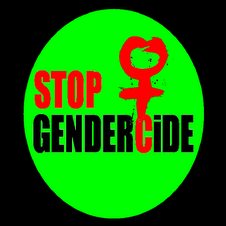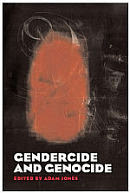Jeremy Page in Delhi
Police in central India have found 390 body parts from foetuses and newborn babies — thought to be unwanted girls — buried in the backyard of a Christian missionary hospital.
Separately, the Government said that it was setting up a network of girls’ homes — dubbed the “cradle scheme” — in an effort to stop poor Indians from killing their daughters.
Both announcements threw a spotlight on female infanticide and foeticide in India, where an estimated ten million baby girls have been killed by their parents in the past twenty years.
Sex determination tests are illegal in India, but many parents — especially in rural areas — still bribe doctors to find out their child’s gender and to carry out an abortion if it is a girl.
Boys in India are traditionally regarded as future bread-winners whereas girls are considered a financial burden because their families must pay dowries to get them married.
Acting on a tip-off, police found the body parts on Saturday, some of them stuffed in plastic bags, buried behind the Mission Hospital in Ratlam, a town in the state of Madhya Pradesh.
They have seized hospital records, sent the body parts for forensic science tests and taken a hospital sweeper and two doctors into custody.
A group of angry neighbours attempted to gain entry to the hospital demanding that action be taken against senior managers but they were stopped by the police.
The discovery came almost two months after police found the remains of more than 20 women and children behind a house in an upmarket Delhi suburb.
The businessman who owns the house, and his domestic servant, have been arrested in that case and are reported to have confessed to raping and murdering the victims.
The businessman, Monindher Singh Pandher, who had no criminal record, is said to have links with state politicians.
Six police officers have been sacked, four senior officers suspended and the area police chief transferred for alleged criminal negligence in the case, amid complaints that they ignored reports of missing children.
The grisly find in Ratlam sparked rumours of a similar crime. However, police said it was more likely that the hospital had been illegally performing abortions and trying to dispose of the evidence.
“The question of female foeticide and infanticide is part of our investigation, as is illegal abortions,” said Satish Saxena, the local police superintendent.
Renuka Chowdhury, the Minister of State for Women and Child Development, called yesterday for emergency measures to stop female infanticide and foeticide.
Mrs Chowdhury said that emergency measures were necessary as evidence indicated that the practice of aborting or killing female children was spreading.
“It is a matter of international and national shame for us that India, with a growth of nine per cent, still kills its daughters,” she said.
The practice has also caused an alarming gender imbalance in India’s population, she said. The number of girls born per 1,000 boys born fell from 945 to 927 between 1991 and 2001, according to the latest Indian census figures. Many districts report as few as 800 girls for every 1,000 boys.
To try to correct the imbalance, Mrs Chowdhury said that the Government would adopt unwanted girls and raise them in a network of special homes.
“What we are saying to the people is have your children, don’t kill them. And if you don’t want a girl child, leave her to us,” she said.
The Government says that it is clamping down on doctors flouting the law that bans prenatal sex determination tests, and a national campaign with the slogan, “My strength, my Daughter”, was launched late last year to encourage more parents to protect their infant daughters.
However, social activists say that there are many loopholes which allow those who provide tests to remain free of presecution. Since the law was enacted only one doctor has been convicted of illegally aborting female foetuses.
Mrs Chowdhury did not say how much the scheme would cost but she said that money had been allocated in the next budget. The minister also said that she hoped the planned cradle centres would provide an opportunity for parents who had a change of heart to reclaim their children.
But activists said that the government proposal was absurd. They said that it would send the wrong message, and fail to reduce the number of abortions.
“Most of the girls are killed before birth, not after birth. So, where is the option of abandoning girls if they are not born at all?” said Sabu George, who has researched female foeticide for two decades.
He said that some girls abandoned under a similar scheme in the southern state of Tamil Nadu in the 1990s died at poorly staffed and supplied Government hospitals.
Toll of shame
50m: number of girls that Unicef estimates are ‘missing’ from Indian society
1.05: males to every female in India, reversing the world average
600: rupees now, save 50,000 rupees later” is the advertising slogan of diagnostic teams with ultrasound machines that predict the sex of the unborn child
£18,000: can be the price of a wedding and dowry. Girls are killed because of the financial burden they place on their families
9.6m: more boys aged between 0-14 than girls
1949: Year when Indian women were granted full suffrage
54: per cent turnout of women voters in 2004 election, 62 per cent among men
10m: number of female foetuses aborted since ultrasound scanning was first used 20 years ago
1994: Year when scanning to find out gender was made illegal. It is widely ignored
0: the number of cases that have come to court
24.9 median age for men and women
Sources: news agencies
Wednesday, May 7, 2008
Subscribe to:
Posts (Atom)










